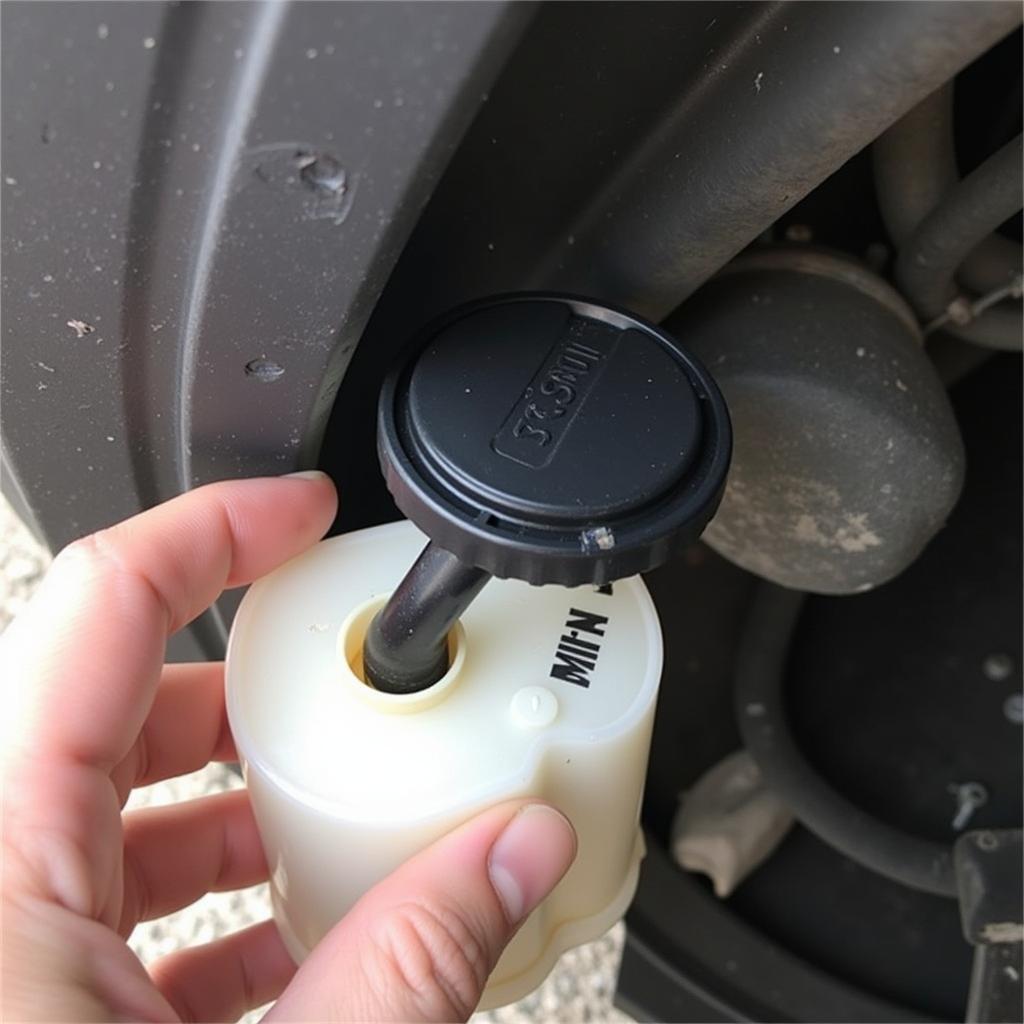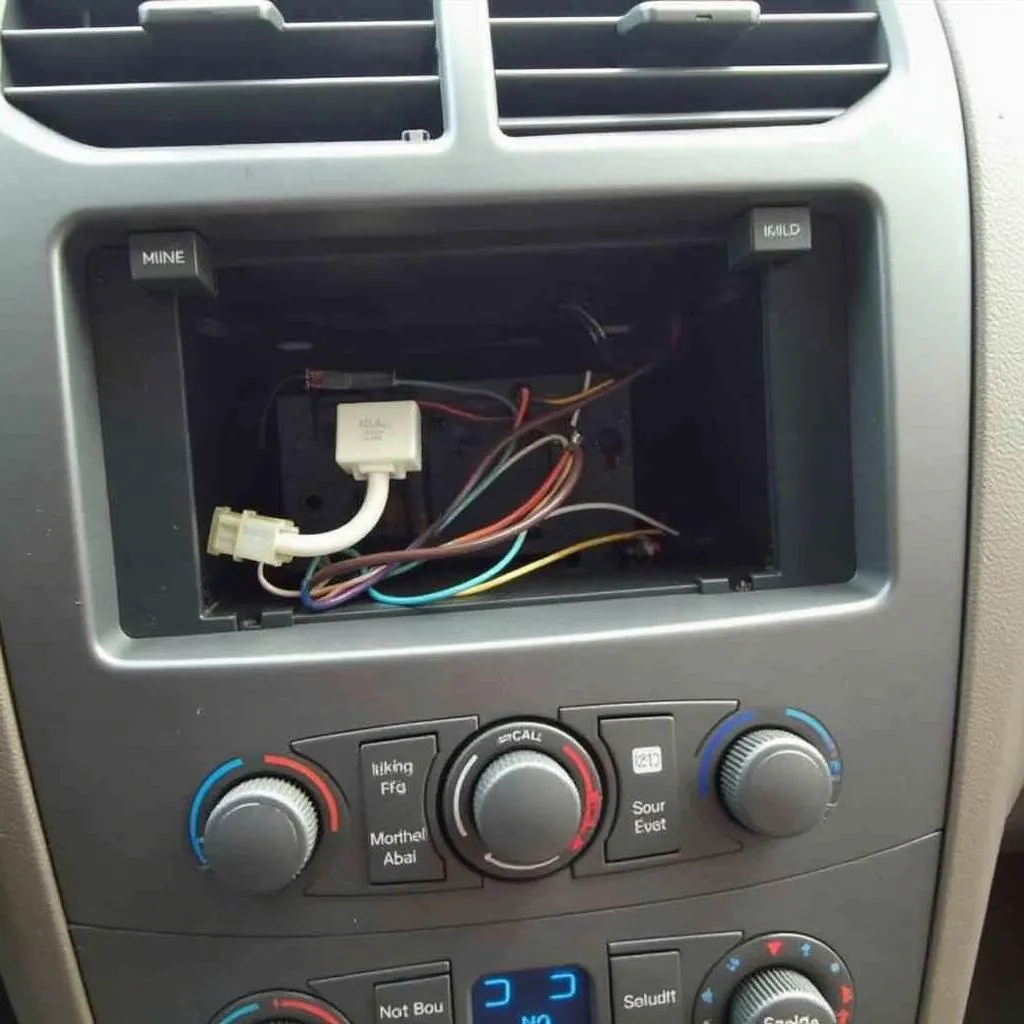The brake and slip warning light on your 2004 Nissan Titan can be a real headache. It typically illuminates as a yellow or amber colored indicator on your dashboard, often accompanied by other lights or messages. Ignoring this warning could lead to serious safety risks, so understanding what triggers it is crucial. This comprehensive guide dives into the common culprits behind the brake and slip warning light on your 2004 Nissan Titan and provides potential solutions to get you back on the road safely.
Common Causes of the Brake and Slip Warning Light
The brake and slip warning light on your Nissan Titan is part of the Vehicle Dynamic Control (VDC) system. It activates when it detects a loss of traction, often during acceleration or cornering on slippery surfaces. However, it can also point to issues within the braking system itself. Here are some possible causes:
1. Faulty Wheel Speed Sensor
The VDC relies heavily on wheel speed sensors. These sensors, located at each wheel, constantly monitor wheel speed and relay this information to the VDC control unit. A faulty sensor can send incorrect data, causing the system to misinterpret wheel slippage and trigger the warning light.
2. Malfunctioning ABS System
The Anti-lock Braking System (ABS) works in tandem with the VDC. The ABS system prevents wheel lockup during hard braking, while the VDC helps maintain control by managing individual wheel braking and engine power. Issues with the ABS, such as a faulty ABS control module or a damaged ABS sensor, can directly impact the VDC and illuminate the warning light.
3. Low Brake Fluid Level
Brake fluid is the lifeblood of your braking system. It transmits the force from your foot on the brake pedal to the brake calipers, causing the vehicle to slow down or stop. Low brake fluid level, often caused by a leak in the system, can hinder braking performance and activate the warning light.
 Checking Brake Fluid Level
Checking Brake Fluid Level
4. Worn Brake Pads
Worn brake pads reduce the friction needed for effective braking. The VDC system might interpret this reduced braking efficiency as slippage, particularly during hard braking, and trigger the warning light.
5. Steering Angle Sensor Problems
The steering angle sensor tells the VDC which direction the driver intends to steer the vehicle. A malfunctioning sensor can provide incorrect data, leading the system to miscalculate the necessary adjustments and illuminate the warning light.
6. Faulty VDC Control Unit
While less common, a faulty VDC control unit, the brain behind the entire system, can lead to a variety of issues, including an erroneous brake and slip warning light.
Troubleshooting the Brake and Slip Warning Light
Diagnosing the exact cause of the warning light requires a systematic approach. Here are some steps you can take:
-
Check Warning Lights: Note if any other warning lights are illuminated alongside the brake and slip light. This can provide valuable clues about the underlying problem.
-
Inspect Brake Fluid: Carefully check the brake fluid level in the reservoir. If it’s low, there’s likely a leak in the system that needs immediate attention from a qualified mechanic.
-
Visual Inspection: Look for any visible signs of damage or wear to the brake lines, calipers, and wheel speed sensors.
Expert Insight from John Miller, ASE Certified Master Technician: “Never ignore a brake warning light. Even if you think it might be a minor glitch, it’s crucial to have it checked by a professional. Your safety is paramount.”
-
Diagnostic Scan: The most accurate way to pinpoint the problem is to connect an OBD-II scanner to your vehicle’s diagnostic port. This will retrieve any stored fault codes that can reveal the source of the issue.
-
Professional Diagnosis: Unless you have experience with automotive electrical and braking systems, it’s best to leave the diagnosis and repair to a qualified mechanic. They have the expertise and specialized tools to accurately identify and fix the problem.
Conclusion
The brake and slip warning light on your 2004 Nissan Titan should never be ignored. While it might be tempting to hope for a simple glitch, addressing the issue promptly is crucial to ensure your safety and the proper functioning of your vehicle. By understanding the potential causes and taking the appropriate troubleshooting steps, you can get back on the road with confidence. Remember, when in doubt, always consult with a qualified mechanic for a thorough diagnosis and repair.

